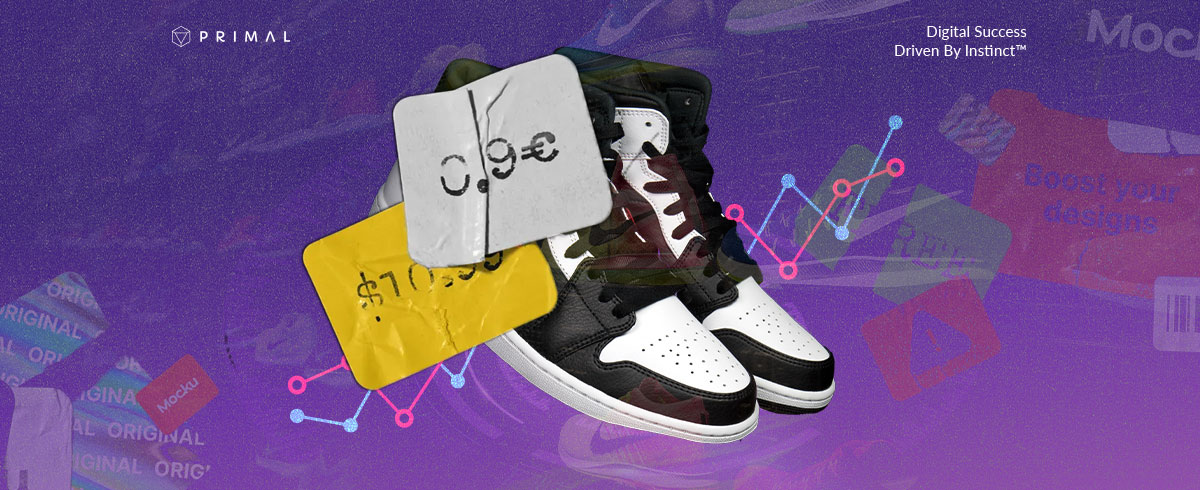Unravelling Pricing Strategies: Attracting Customers Effectively
Having the right pricing strategy is critical for businesses to be profitable. With the dawn of the digital era, which has accelerated global business, implementing pricing strategies is all the more critical. In this blog, we shed light on pricing strategies that have been tried and tested to attract customers.
We’ll tackle the fundamentals of pricing strategies, from what they are to the various types used to influence customer behaviour and decision-making. We’ll also touch on the ethical considerations of pricing strategies, plus do’s and don’ts to remember. Let’s dive in!

Table of Contents
The Fundamentals of Pricing Strategy
The price is one of the key elements of the 4Ps of marketing: Product, Price, Place, and Promotion, which has a significant impact on the company’s revenue and profitability. What is a pricing strategy? A pricing strategy is the methodical approach companies adopt to set the price points for their products and services.
To develop a strategy of pricing, you need to consider the production costs, company objectives, market conditions, and consumer demand. A well-devised strategy attracts and retains customers because it resonates with their perceived value of the product or service, influencing their behaviour and purchase decisions.
Types of Pricing Strategies
Cost-Plus Pricing
This is a traditional method and the most common form of pricing due to its simple, straightforward approach. It entails calculating the cost of production and then adding a fixed percentage of profit. While this strategy ensures that the costs are covered, it often overlooks the customer’s perceived value of the product or service. The cost-plus pricing strategy is best applied when your customer base is price-sensitive. But remember that it doesn’t always capture the actual market value.
Value-Based Pricing
This pricing strategy is becoming more popular because it aligns the price with the customer’s perceived value. Brands like Apple are a prime example of this pricing strategy by pricing products based on consumer demand and perceived value. This strategy necessitates customer research and feedback, which are instrumental in determining what customers are willing to pay. Artisanal products, high-tech items, and unique and niche services benefit from value-based pricing by communicating their differentiating features and added value from their competitors.
Psychological Pricing
This type of pricing uses psychological tactics such as charm pricing (products priced at 999 Baht instead of 1,000 Baht) or prestige pricing for luxury goods to convey superior quality and exclusivity. Other sales tactics include the Buy One, Get One free to appeal to customers’ love of a good deal, limited-time sales to convey a sense of urgency, or tiered pricing to attract customers willing to pay more for better value. This type of pricing dives deep into the consumer psyche to shift perceptions, making products seem more affordable, appealing, or premium.
Competitor-Based Pricing
Businesses that adopt this type of pricing base their prices on their competitors’. It’s a reactive strategy used to gain traction when you’re new to a market that’s already saturated. It’s also easy to implement since you simply need to monitor your competitors and adjust accordingly. However, you still need to differentiate yourself from your competitors. You should also continuously stay updated on movements in the market that can affect your business.
Dynamic Pricing
Thanks to technology, businesses can use tools to monitor market demand in real-time and adjust their prices instead of having fixed prices, especially in dynamic markets. E-commerce platforms like Amazon or airlines fluctuate prices constantly based on algorithms that consider competitor prices, demand, supply, and other variables. However, businesses must take care that the ever-changing prices don’t cause confusion and dissatisfaction to loyal customers.
Penetration Pricing
This strategy involves initially setting low prices for newly launched products to cut through the competition, penetrate the market, and quickly capture a sizeable market share. Streaming platforms and apps, offering initial months free to attract attention and lure customers away from competitors, are examples of this type of pricing strategy. If adeptly executed, penetration pricing will allow your business to successfully build an initial customer base. This may work for the short term. However, in the long run, this may impact your profit margin and cause a price war with your competitors.
Price Skimming
Price skimming works best for innovative products that don’t have much competition yet. Companies can create interest and charge a high price when the product is launched to take advantage of the high demand for as long as possible. Then, as the clamour dies down, you can eventually lower the price to match your competitors.
Ethical Considerations in Pricing
When pricing their products and services, businesses must prefer fairness and transparency over manipulative tactics that may offer short-term gains but tarnish the brand’s reputation in the long run.
Setting a pricing strategy is like solving a puzzle or navigating an intricate maze – where you’re not always guaranteed success. Here are a couple of expert tips to help ensure your pricing strategy reaps rewards:
Pricing Do’s
Do Research Thoroughly. Always base your pricing decisions on comprehensive market research. Understand the economic landscape, competitor prices, and, most importantly, your customers’ willingness to pay.
Stay Dynamic. Markets, especially in the digital era, are ever-evolving. To boost your business’s chance of survival, regularly revisit and revise your pricing strategy to align with current trends, market conditions, and consumer demands.
Offer Tiered Pricing. Give customers choices by offering multiple price points like Basic, Standard, and Premium. This will enable you to cater to a wider audience and up-sell to existing customers effectively.
Test and Optimise. Use A/B testing to gauge customer reactions and behaviours to different price points. Analyse the data and adjust your pricing accordingly to maximise sales and revenue
Pricing Don’ts
Avoid Underpricing. While low prices can attract customers in the short term, they can devalue your offering and squeeze your profit margins. Ensure that your price always reflects your product value.
Don’t Rely Solely on Competitors. While it’s wise to be aware of competitors’ pricing, your strategy should not mirror theirs exactly. Since some aspects of your products and services differ from theirs, be sure to factor in your costs, value proposition, and brand positioning.
Avoid Frequent Fluctuations. While dynamic pricing is a powerful tool to maximise profitability, extreme and frequent price changes can confuse and deter loyal customers from making further purchases.
Don’t Neglect Customer Feedback. Always keep the lines of communication open to receive customer feedback. Remember that feedback can provide invaluable insight into how your product and pricing are perceived.
Avoid Overcomplication. Keep your pricing structure straightforward. Complex strategies can cause confusion, be difficult to understand, and deter potential customers from making that purchase.
Future of Pricing Strategies
With AI and machine learning on the rise, businesses can anticipate even more personalised pricing strategies based on individual consumer data. This is especially true for e-commerce, digital products, and services that analyse customer information to offer individualised pricing. This involves giving different prices for the same product or service according to the individual potential customer, which has its own set of benefits and dangers as well. While it may enable companies to optimise their sales potential, it may lead to misuse of customer data and pricing discrimination.

Conclusion
Implementing the right pricing strategy acts as a catalyst for business growth by attracting and retaining customers. Companies today must review and refine their pricing strategies to meet their specific needs and goals and thrive in today’s competitive landscape. Business owners and marketing professionals seeking expert guidance to navigate pricing strategies will find it at Primal Digital Agency.
With a depth of experience and expertise in the digital domain, our team at Primal Digital Agency have a strong track record of successfully aiding companies with effective and bespoke digital marketing campaigns, including pricing strategies, to ensure market growth and profitability. Contact us for a consultation.























Join the discussion - 0 Comment